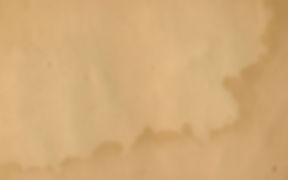
BLACK MOUNTAIN COMPLEX PETROGLYPHS
Recovering Indian history from ancient Native American rock writings.
Kroeber goes on to stipulate “there is no evidence” that the clans are related, other than the proximity of the villages and marriage practices, no corporate identity. He indicates that ritual associations are somehow required for corporate identity and that each clan claimed, but did not actually hold title to [the word “belonging” in quotation marks”], several residential sites. He further stipulates that the Mojave could not, or would not discuss their real estate holdings, because ownership was confusing, compared to their earlier history.
Except for the fact that the information provides for a better story, the comments are disguised, subliminal suggestions and irrelevant to the Mojave history and data collection process itself. Kroeber’s suggestion that “there is no evidence” does not represent scientific fact, only opinion. Likewise, his indication that ritual associations are required for corporate identity is stipulated in neither statute law nor scientific axiom. However, given the indisputable reputation he has been provided by the overwhelming political power of the Board of Regents, UC/Berkeley; including lawyers, judges and lawmakers, it is highly probable that his “opinion” as an “expert” witness would be accepted as evidence, in and of itself, regardless of actual scientific stature.
Kroeber ties his strategic remarks to his data collection activities by describing how the Mojave explained that only certain elderly men (historians?) could tell him about the ancient history of the tribe...he is careful not to use the term history, but refers to the information as “travels and fighting”. He says that his informants refer to the oration of the history as the “Great Telling”, which he puts in quotation marks ... suggesting the history is just a story or tale being told for entertainment value only, and that it has no basis in fact...which Kroeber can neither prove, nor disprove. The informants, at this point, are individuals who do not know Mojave Indian ancient history; they may or may not even know a Mohave Indian historian, personally.
What Kroeber does not say, early on, is that his information is not first hand; it is being filtered through interpreters and that he records what his interpreters tell him. He points out that the interpreters would allow the informant to talk for “perhaps five to ten minutes...until the interpreter had as mush as he could remember” then the interpreter would repeat the interpreted information to Kroeber...who tried to keep up by [1] omission of repetitions, [2] condensation of verbiage and [3] some abbreviations... while writing in long hand. These facts, in-and-of themselves, should set off all kinds of alarms regarding the accuracy of the information and the validity of the research. The interpreters may have used the same informational processes as Kroeber; they may have paraphrased what they were told. Therefore, any errors in the paraphrased interpretations would have been compounded by the power of two (2) and the questionable method of documentation employed multiplied the potential error factor astronomically. Granted; the method employed may have been the best of it’s time, but “best” effort under the prevailing conditions of the early 1900s does not constitute scientific, nor legal, accuracy.
Questions also arise as to whether or not his interpreters interpreted the informants correctly; Kroeber does not indicate that his interpreters were native Mojave. If they were not, the verbalized interpretations are further subject to multiple errors caused by
The purpose of this site is to inspire awareness, preservation and research of all rock art/writings. As the site grows and develops, it is hoped that YOU will help in these efforts by submitting questions, comments and suggestions: Our primary means of communication is the 'Contact' button above.
© 2023 by My site name. Proudly created with Wix.com